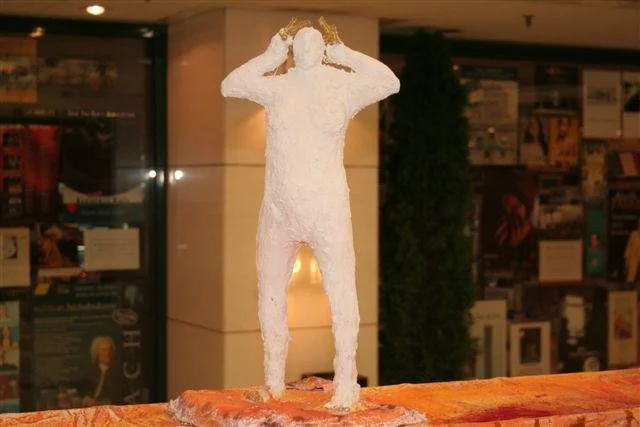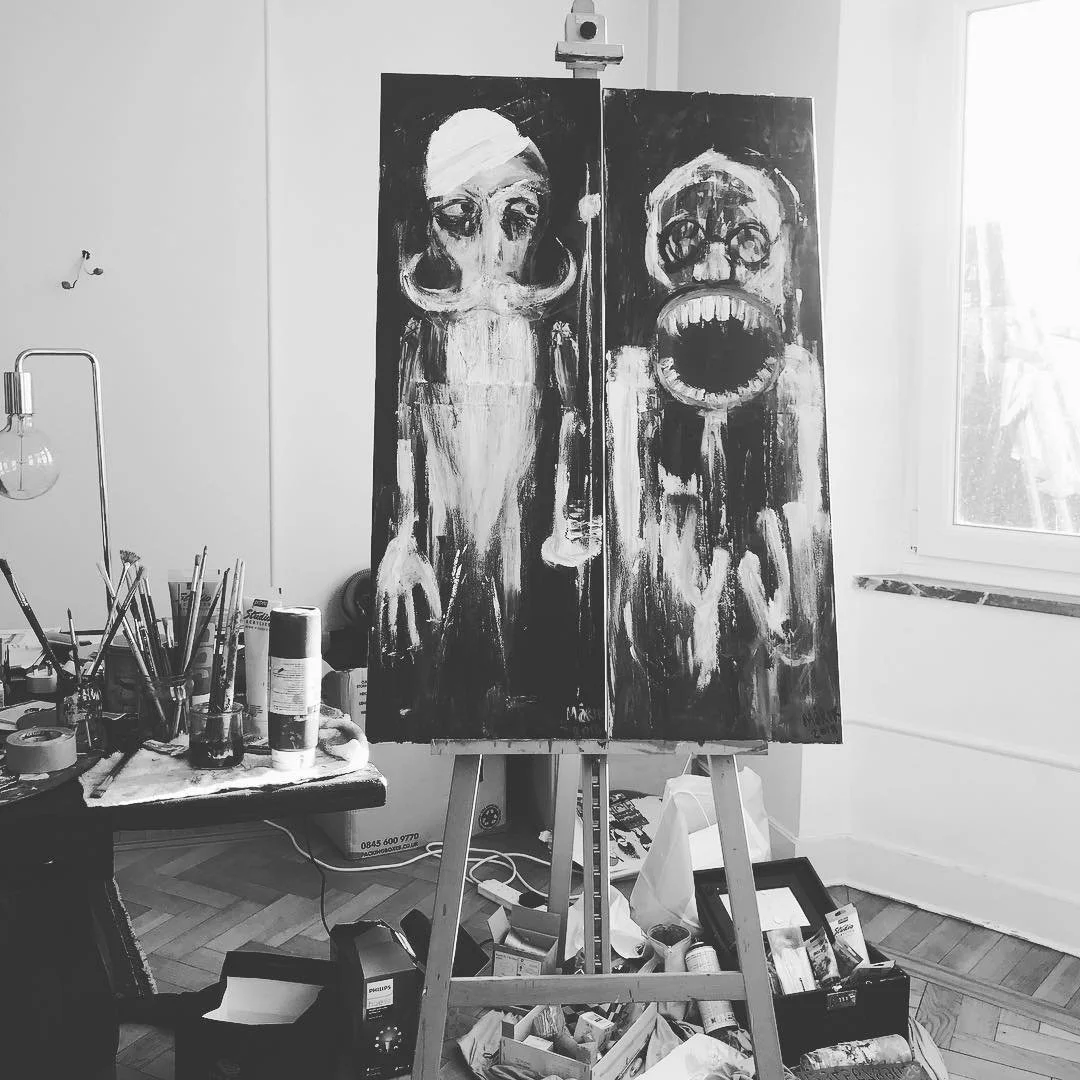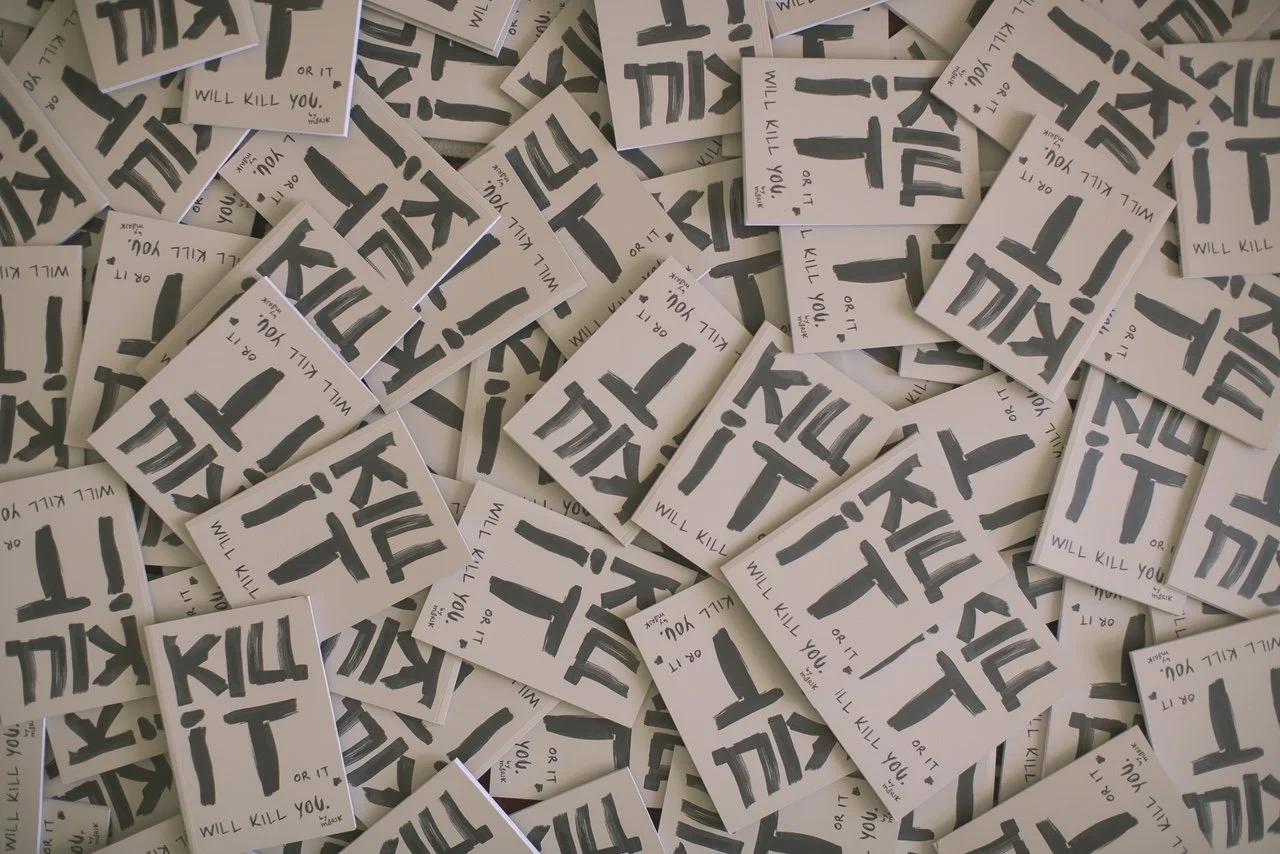Interview with MaRIK (Maria Kontogiorgou)
MaRIK (Maria Kontogiorgou) is an accomplished multidisciplinary artist, animator, and illustrator with over a decade of professional experience. She holds an MA in Animation from the University of the West of England (UWE) in Bristol and has developed a unique expertise in digital and mixed media. Her work seamlessly blends traditional and modern techniques, and she has gained recognition for creating compelling visual narratives across a variety of media.
Her art has been exhibited in prestigious venues including the Royal Academy of Music in London, Athens Concert Hall, Expo 2005 in Japan, and Romatzo. She has worked with global brands such as Coca-Cola, Nike, Unilever, Nestlé, BBC, H&M, Mastercard, and Canon, contributing to high-profile projects through collaborations with leading agencies like JWT, Mindshare, McCann Erickson, and Jellyfish.
In addition to her commercial work, MaRIK is the creator of Kill Fears®, a multidisciplinary project that addresses overcoming trauma and self-awareness through various tools including books and VR technology. Her work has been featured in Circle of Art magazine, and she is a member of the Directory of Illustration and The AOI. MaRIK continues to push boundaries in both traditional and digital media, making significant contributions to animation, fine art, and commercial illustration on an international scale
Throughout your career, beginning with your MA in Animation and moving through various major collaborations, how have you seen your creative process evolve? Can you describe a project that particularly challenged your traditional methods and how you adapted?
Throughout my career, starting with my MA in Animation, I've seen my creative process evolve significantly, especially as technology advanced. Starting in 2006, I shifted from blending traditional art methods with digital techniques to fully recreating the tactile feel of real media within a digital space. This marked a turning point in my work, as I began developing techniques that captured the essence and texture of traditional mediums—such as oils and acrylics—using solely digital tools.
Projects like ‘Human: An Illusionist', a digital animation that mimicked traditional textures, and an animated music video ‘ Η τρελή’ that merged photography with vector graphics, marked my early attempts at this fusion.
‘Human: An Illusionist’ was especially transformative. It began as a digitally painted still traditional animated film concept in Bristol (UWE) but grew into an immersive installation in Athens (Athens Concert Hall) , where I used everything from paintings to sculptures, blending physical and digital elements.
The challenge was in pushing digital tools to replicate the texture and richness of real-world materials like oils and acrylics. Almost twenty years ago, these combinations were groundbreaking, particularly because I used iPods (iPads were not there yet) as digital canvases to deliver a unique experience to the visitor, which were quite innovative approaches at the time.[2006_animation archive]: https://vimeo.com/marik]
Another project that significantly contributed to my creative evolution was ‘Aloft in the Clouds’, which I completed in 2006. This hard copy book of illustrative poetry was entirely crafted on a digital canvas, using techniques that mimicked oils and acrylics (like ‘Human an Illusionist”). It allowed me to explore how digital tools could replicate the texture and depth of traditional media while telling a more intimate story through poetry and illustration.
This project was particularly exciting because it merged the tactile quality of traditional art forms with the precision and versatility of digital media. It pushed me to see how far I could take digital tools to create something that felt hand-painted, even though it was entirely virtual. It was a departure from my earlier animation-focused work, bringing the storytelling aspect into a more static, yet deeply expressive format.
Another exciting aspect of Aloft in the Clouds was that after completing the illustrations digitally, I printed them onto large-scale canvases and exhibited them, which was met with great success. This project truly demonstrated how digital art can transition from the screen to a physical form, retaining the texture and richness of traditional media. It reinforced the idea that digital tools could serve as a bridge between two worlds—virtual creation and physical exhibition.
Each of these projects has offered a unique challenge, pushing me to continually adapt and refine my methods as I blend tradition with technology, and showcasing how digital art can transcend its medium when approached creatively.
Technological advancements have reshaped both traditional and digital media, with tools like real-time rendering, AI animation, and virtual reality unlocking new possibilities. I’m always exploring these innovations to enhance my creative process, but at the heart of any project is still storytelling and craftsmanship. While technology opens up new ways to create, I’m committed to preserving the depth and authenticity that make the work resonate, whether digital or analog.
With such a diverse portfolio, including work for major brands like Coca-Cola and Nike, what criteria do you use to select projects or collaborations? How important is the alignment of brand ethos with your personal or artistic values?
Throughout my career, I’ve explored different ways to balance artistic integrity with a sustainable business model. Working with major brands like Coca-Cola and Nike carries both responsibility and opportunity—it helps establish credibility but requires compromises. Early on, I chose to collaborate with these brands to gain visibility and trust in the market. However, as a painter, my personal work remains an unfiltered expression of my inner struggles and triumphs, guided solely by my own journey, without any external conditions or expectations. The challenge is always finding harmony between these two worlds.
Working with large agencies and brands often involves navigating complex dynamics and varying creative visions. Can you share a particularly challenging collaboration experience and how you managed to align differing expectations?
I recall a project where I was hired to develop a concept that would highlight the company’s focus on technology and innovation. While the concept was initially approved, financial constraints later posed a significant challenge, and the company saw the original vision as too risky. They asked me to deviate from the initial plan, which was difficult as it compromised key creative elements. I implemented the revised version, but I also gathered user feedback to demonstrate a strong preference for the original concept. This allowed the company to make a more informed decision, balancing risk with creative value.
When approaching narrative-centric projects, particularly for children's books or film, how do you go about building compelling narratives through your illustrations? What is your process for intertwining narrative elements with visual components?
My animation studies have greatly enhanced my ability to craft compelling visual narratives, especially for children's books or films. They taught me how to build storytelling structures that are clear and engaging from the viewer’s perspective. The key is identifying the main elements—characters, environment, and mood—and en suring they remain consistent throughout the story. This creates a visual thread that guides the reader or viewer through the narrative. By balancing dynamic illustrations with clear storytelling cues, I make sure the visual elements support and enhance the overall narrative, creating an immersive experience.
How do current cultural trends influence your work, especially considering your involvement in projects with global brands? Can you provide an example where a cultural trend significantly shaped the concept or execution of a project?
Art, for me, transcends cultural or national boundaries. My focus is always on the emotional core—those deep, often unspoken feelings like fear, pain, sorrow, and insecurity. I aim to tap into universal emotional symbols, steering clear of societal or religious structures, so the work resonates on a more human level. Sometimes I use a humorous or grotesque approach to depict these darker emotions, offering a glimmer of hope even in the most challenging themes. Pieces like Sorrow, You Can Kill Me, Inner Child, and I See Through You embody this philosophy.
Even when working with global brands, my aim is to stay true to this emotional depth. For example, during a project influenced by rising conversations around mental health, I leaned into themes of vulnerability and resilience, ensuring that the work spoke to these universal emotions while still aligning with the brand’s messaging.
What are your primary sources of inspiration when developing new concepts or themes for your illustrations? How do you keep your creative well replenished in the face of tight deadlines and ongoing projects?
My primary inspiration comes from observing people—their expressions, body language, and the untold stories they carry. Travel, architecture, design, and nature all fuel my creative process. Whether it’s the way leaves move in the wind or the sounds of a bustling city, I absorb everything around me. This act of observation is not only essential to my work but also serves as an emotional relief, a way to express the current state of my soul. Through my art, I reveal hidden, unspoken stories that offer both myself and the viewer a sense of mental and emotional release.
When it comes to illustration commissions, the process is a bit different. I focus on fulfilling the client’s brief, often becoming a creative vessel for their vision. This approach is much like an actor taking on a role—fully immersing myself in the creative direction, which is why my portfolio has such variety. It's about using my skills to interpret and bring to life whatever the project demands, while still infusing it with a sense of authenticity.
What key pieces of advice would you offer to aspiring illustrators and animators who wish to carve out a niche in this competitive industry? Are there specific skills or attitudes you believe are essential for success?
My advice to aspiring illustrators and animators is to always observe and learn from the best while dedicating yourself to honing your skills. Stay curious and keep up with the latest trends and technologies in the field, as it’s essential to remain adaptable in this ever-evolving industry. Be collaborative and humble—embracing constructive feedback from industry veterans can help you grow without compromising your personal style or passion.
It’s also crucial to define your goals and create a strategy to achieve them. Remember, setbacks aren’t failures; they are part of the learning curve that will help you progress. Stay persistent, keep your enthusiasm alive, and never stop evolving.
Your project 'Kill Fears®' presents a unique perspective. Could you elaborate on the genesis of this idea, its development, and the impact you hope it has on your audience?
Killfears® was born in 2012 in London, stemming from my own need to understand and overcome post-traumatic stress, which was significantly impacting my quality of life. It’s a deeply personal project aimed at helping others who struggle with fears—whether big or small—to regain control and improve their well-being.
The idea is to provide a methodology for addressing fear, using a variety of tools like a book (available in both hardcopy and audiobook formats), smart devices, and immersive VR elements developed in collaboration with Enosis VR. These tools are designed to help people explore their fears and anxieties in a tangible way, giving them a path to better self-awareness and emotional resilience.
Through Killfears®, I hope to spark conversations around the nature of fear and why we let it limit our potential. By engaging with these tools, I want the audience to not only recognize their fears but actively work toward overcoming them. It's about empowerment—allowing individuals to face their fears and ultimately improve their quality of life.
Looking toward the future, how do you see the landscape of illustration and animation evolving over the next decade, and what new directions are you excited to explore in your own work?
Looking ahead, I’m excited to explore how traditional and digital art can coexist with AI, finding new ways to push the boundaries of storytelling while maintaining that human touch. It’s about staying true to what makes art impactful—its ability to connect with people on a personal level, regardless of the medium.
MARIKWORLD LTD
www.marikworld.rocks
www.killfears.com
marikworld@icloud.com


















